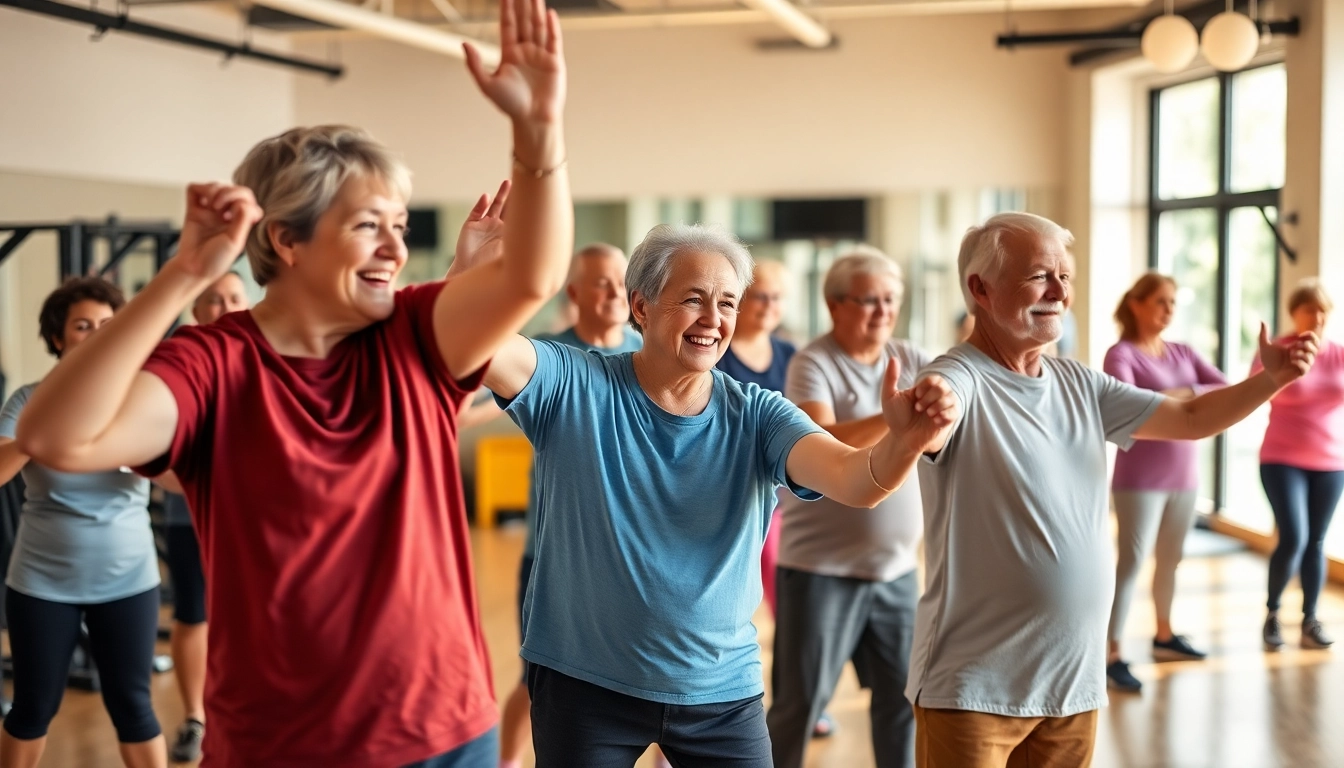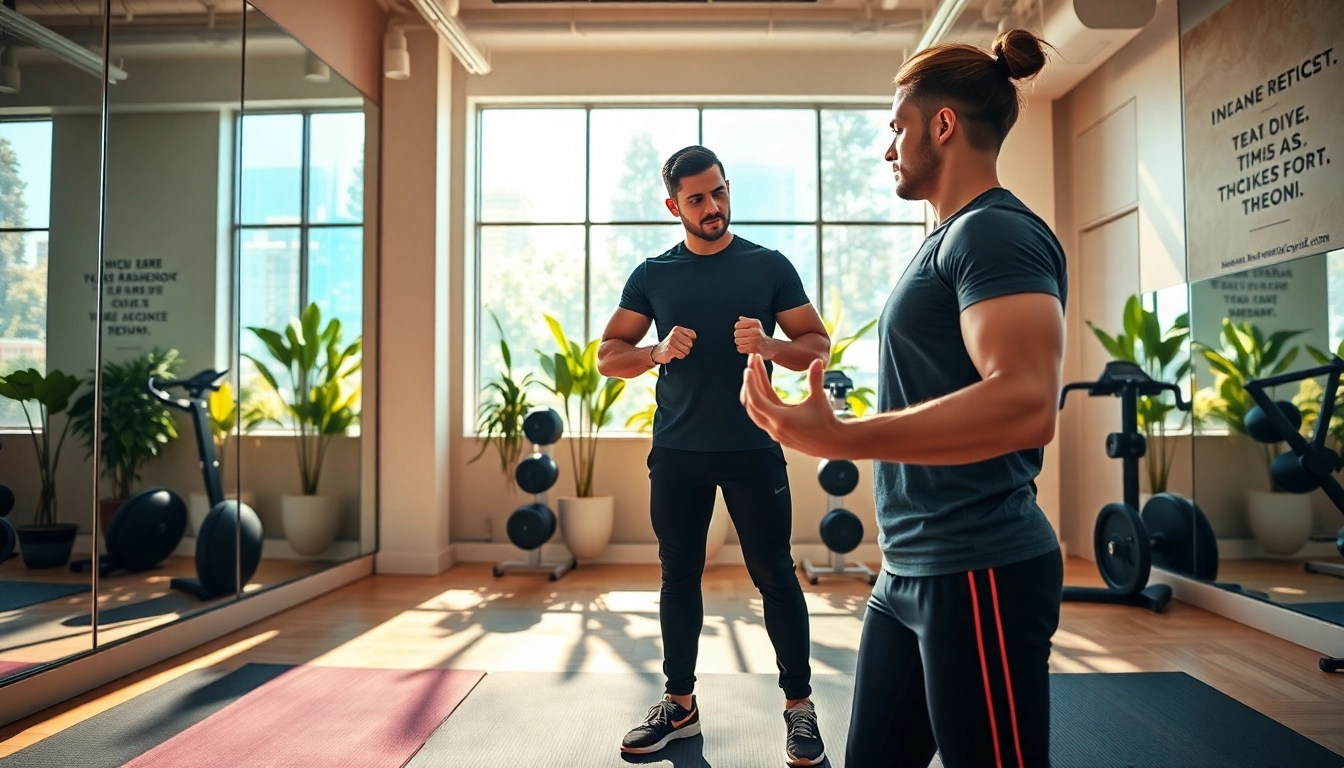1. Understanding the Benefits of Gym Group Training
In today’s fast-paced world, finding motivation to work out can be a significant challenge. Gym group training offers an engaging solution that not only promotes individual fitness goals but also cultivates a supportive community. As participants come together for collective workouts, they experience numerous benefits, from enhanced physical fitness to increased motivation through camaraderie. In this article, we delve into the multifaceted advantages of gym group training, providing insights for both participants and instructors alike.
1.1 Physical Benefits of Group Workouts
Physical health is the cornerstone of overall well-being. Group training offers unique advantages that help individuals push past their limits. Firstly, the collective energy in a class often boosts performance during workouts. Research shows that working out in a group can increase effort and duration compared to exercising alone. Moreover, group training sessions frequently incorporate varied formats and exercises, exposing participants to different workout styles that enhance overall fitness. Diverse exercises can reduce the risk of injury by ensuring a full range of movement, and many classes emphasize proper form and technique, benefiting participants of all skill levels.
1.2 Psychological Advantages of Group Fitness
Beyond the physical realm, gym group training plays a significant role in mental and emotional health. The presence of others not only helps to alleviate the psychological barriers that often accompany self-directed workouts but also elevates mood. Group workouts result in the release of endorphins, the body’s natural mood lifters. This phenomenon is especially beneficial for those who may struggle with motivation or have low confidence in their fitness journey. Furthermore, there’s an increased chance of forming friendships and support networks in group classes, contributing to a positive mindset and potentially reducing the risk of depression or anxiety.
1.3 Social Aspects of Gym Group Training
Social interaction in group settings adds another layer of benefit to gym training. Unlike solitary workouts, group training fosters a sense of community and belonging. Regular participants tend to form close bonds, enhancing commitment and attendance. These connections often extend beyond the gym, providing a network of support that contributes to an individual’s overall well-being. Instructors can harness this social dynamic by encouraging participants to engage with one another through partner exercises or team challenges, making workouts not just a physical obligation but a fun, social event that attendees look forward to.
2. Crafting the Perfect Group Training Session
Creating an engaging and effective group training session is crucial for both participant enjoyment and stuck outcomes. With careful planning, instructors can design classes that cater to diverse fitness levels while incorporating effective strategies that keep everyone involved and motivated.
2.1 Essential Components of a Group Class
For a group training session to succeed, several essential components must be interwoven. Firstly, a clear structure is vital. Classes should begin with a warm-up to prepare muscles and joints, followed by a main workout segment that combines strength, cardiovascular, and flexibility exercises. Each segment should culminate in a cool-down, allowing participants to relax and stretch accordingly. Additionally, a tailored playlist can energize participants, enhancing enthusiasm and motivation throughout the class. Lastly, providing modifications and progressions for each exercise will help attendees of all ability levels feel included and challenged.
2.2 Selecting Suitable Exercises for Groups
Choosing the right exercises for group training is crucial. Exercises should ideally incorporate both compound movements, which engage multiple muscle groups, and isolation exercises that target specific areas. High-repetition, moderate-intensity workouts are often favored, allowing for maximum participation without excessive fatigue. Additionally, incorporating functional movements—such as squats, lunges, and push-ups—ensures that exercises are relatable and applicable to daily activities. Utilizing equipment like resistance bands, free weights, and stability balls can also enhance the variety and challenge of workouts.
2.3 Timing and Structure for Maximum Engagement
Timing and structure are key to creating an engaging atmosphere that keeps participants interested. Instructors should carefully plan the duration of each workout segment, typically allowing anywhere from 10 to 30 minutes for main workout sections, depending on the overall class duration. A quick-paced structure that involves intervals or circuits can maintain high energy levels. Nonetheless, it’s essential that each component flows seamlessly into the next, utilizing transitions that keep participants momentarily focused and engaged. Encouragement throughout the session, paired with a call-and-response approach, can further enhance engagement.
3. Best Practices for Instructors
Instructors play an integral role in the success of group training sessions. By establishing guidelines that foster inclusivity, encouragement, and performance, they can significantly enhance the experience for all participants.
3.1 Creating an Inclusive Environment
An inclusive environment is essential in group training, as it allows everyone to feel valued and supported. This can be achieved by welcoming attendees regardless of background or fitness level. Instructors should introduce themselves, share their own fitness journey, and encourage participants to do the same. Furthermore, creating space for individual adjustment is crucial; providing modifications for all exercises will ensure that everyone can participate comfortably and safely, allowing them to build confidence within the group dynamic.
3.2 Balancing Challenging Exercises for All Fitness Levels
Balancing challenges across varying fitness levels is a delicate art. Instructors can curate workouts that are inherently adaptable. For example, offering modifications for higher-impact exercises, such as allowing participants to perform push-ups against a wall instead of the floor, helps individuals identify which level suits them best. Conversely, advanced attendees can be provided with additional weights, more challenging variations, or even the choice to complete additional reps. This strategy not only keeps the class dynamic for skilled participants but also builds a camaraderie that encourages others to push themselves.
3.3 Techniques to Foster Motivation and Accountability
Motivation and accountability are crucial for the success of group training. Instructors can foster a culture of encouragement through recognition of participant achievements, both big and small. Setting team challenges or providing small rewards for consistent attendance can inspire participants to remain engaged and accountable. Moreover, checking in with participants individually can make each attendee feel valued and understood. During sessions, instructors should regularly offer positive affirmations and encourage peer support, building a connected and motivated group.
4. Measuring Success in Gym Group Training
Measuring success is vital for continuous improvement in group training programs. By tracking attendance, client satisfaction, and participant progress, instructors can identify areas for growth and enhancement.
4.1 Tracking Progress and Client Retention
Tracking progress is an essential component of any effective training program. Instructors can utilize performance metrics or set fitness goals for participants to work toward, providing tangible evidence of improvements over time. Regular assessments—such as timed runs or strength tests—can also be beneficial for establishing a baseline and tracking advancement. Monitoring client retention rates reveals how well group dynamics resonate with participants; high turnover may indicate a lack of engagement, necessitating improvements in session structure or activities.
4.2 Gathering Feedback for Continuous Improvement
Engaging participants’ feedback through surveys or informal discussions can provide invaluable insights into session effectiveness. Instructors should solicit input on various aspects, such as class frequency, intensity, delivery, and overall satisfaction. This feedback will guide improvements, ensuring that the program remains responsive to participants’ needs. Furthermore, offering opportunities for participants to share their success stories can inspire others and reinforce the value of group training.
4.3 Success Stories from Group Training Programs
Success stories have tremendous power in demonstrating the efficacy of gym group training. Sharing testimonials and case studies can inspire new members and validate the experiences of existing participants. Instructors should encourage participants to share their journeys in social media groups or during class—spotlighting transformations achieved through group support. These stories reinforce not only individual successes but also the efficacy of the group training model itself, encouraging continued participation and commitment.
5. Overcoming Challenges in Group Training
While group training has numerous benefits, it is not without its challenges. Addressing these hurdles proactively ensures a smooth experience for everyone involved.
5.1 Addressing Diverse Fitness Levels
Everyone has a unique fitness journey, and it is crucial for instructors to accommodate diverse abilities effectively. The implementation of scalable exercises is paramount; attending to participants’ individual needs without detracting from overall class dynamics requires active management from instructors. For example, during high-intensity training, those who feel fatigued early can be provided with options for lower-impact alternatives instead. This flexibility fosters a culture of acceptance and inclusion, making each attendee feel like an integral member of the class, regardless of their starting fitness level.
5.2 Managing Group Dynamics Effectively
Group dynamics can significantly influence the energy and outcomes of training sessions. Maintaining an open line of communication with participants establishes trust and rapport, making members feel comfortable engaging with each other and the instructor. Addressing conflicts promptly—whether about equipment, space, or interpersonal issues—will prevent disruptions to class flow. Encouraging cooperation through group challenges and team-building activities can also bolster positive dynamics, ultimately enhancing participant experience.
5.3 Adapting to Environmental Constraints
Environmental constraints, such as space limitations or poor weather conditions, can pose challenges for outdoor or large group training sessions. Instructors must be prepared to adapt quickly, reshaping exercises or choosing alternate venues as necessary. Setting up a flexible routine that can be executed indoors or outdoors helps accommodate changes in weather while ensuring a seamless experience regardless of the setting. Instructors should also develop a backup plan in case of unforeseen issues, allowing for quick adaptations without sacrificing the quality of the session.
In conclusion, gym group training presents an array of valuable benefits, from improved physical fitness to enhanced psychological well-being and social connection. By understanding the core aspects that contribute to successful group training sessions, instructors can promote inclusive environments, instill accountability, and monitor progress effectively. Armed with best practices and proactive strategies to overcome challenges, both instructors and participants benefit from the unique community cultivated within group training. The journey toward fitness is made infinitely smoother and more enjoyable in the dynamic arena of group workouts.



